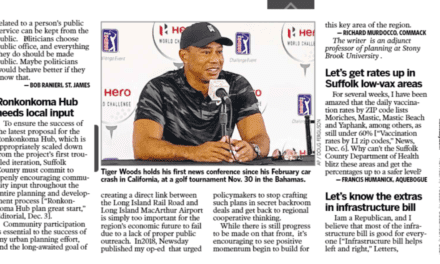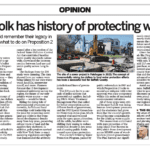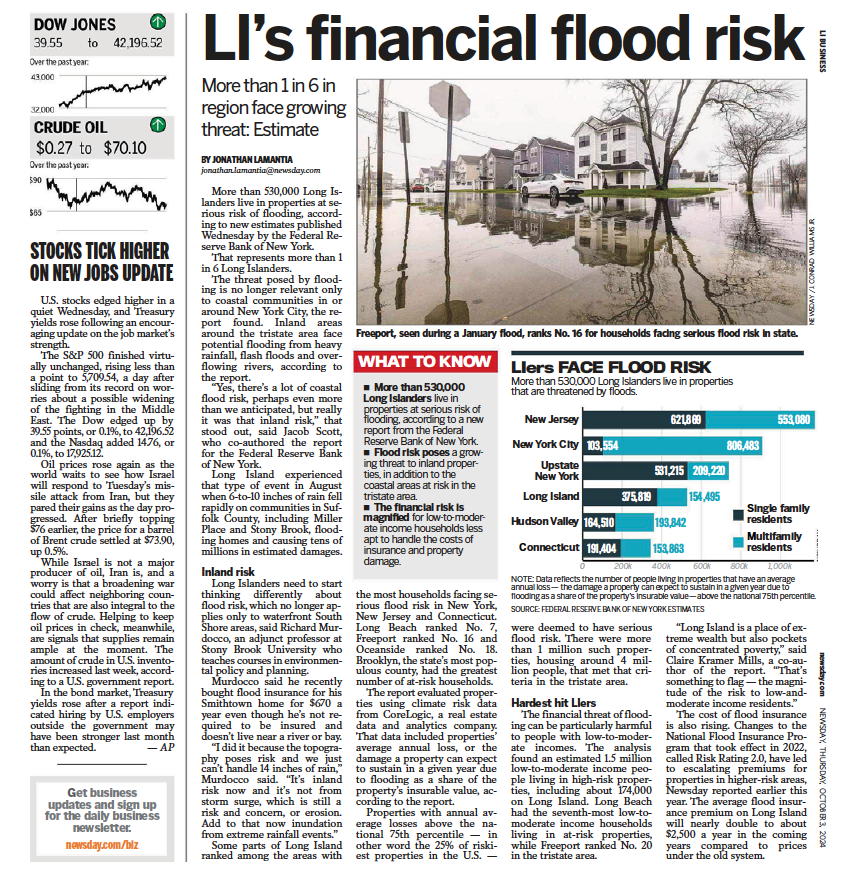It would seem to an outsider after reading recent headlines in various local and regional newspapers that Long Island is short on high paying jobs, yet has surplus amounts of taxes to go around. To make matters worse, the roads are decaying, downtowns are dying and youth are fleeing at an alarming rate.
To this outsider, it would seem the Nassau – Suffolk region is a dinosaur, an outdated suburban former- paradise that never quite caught up with trends of smart growth that embraced urban-style living that swept across metro areas years ago. After reading these various accounts, it would seem that Long Island isn’t worth the time or investment needed to “save” it from itself.
The question is, does Long Island really need saving? Further, is there something to gain if they say that it does?
In recent years, there has been a troubling rise of headlines that cry of suburban excess, yet are light on both realistic solutions and substance. When it comes to reporting on economic development policies, the media chooses to shout alarming headlines that catch attention, but not take the time to analyze the data that is supposedly driving these claims. Worse, much of this coverage fails to “consider the source” of who, exactly, is saying Long Island is broken.
In the latest example of this trend, the website FindTheBest.com
In the media coverage of FindTheBest’s rankings, headlines read – SITE SAYS LONG ISLAND IS EXPENSIVE without mentioning that the group are comparing costs on a national scale (for example, those found in rural Tennessee to those in Metro New York,) or that the economic factors studied aren’t exactly “apples to apples.”
More important than what FindTheBest studied is what they didn’t – note how any mention of the region’s prevailing wages are strangely absent, as are metrics of educational attainment or economic earning potential. Further, how does existing equity factor into these costs? Lastly, the study ignores the fact that a dollar’s spending power varies from state to state.
These vague, alarmist stories are counterproductive to addressing the true regional problems that Long Island has. Policy formulation isn’t about alarmist headlines, but about data driven solutions that take a hard, unblinking look at our regional conditions.
In another example from recent weeks, residents read a story with a headline similar to SURVEY: MANY YOUNG ADULTS LEAVING LI DUE TO LACK OF JOBS, with the article forgetting to mention that a mere 0.15% of millennials living on Long Island were surveyed online by the Suburban Millennial Institute, or that this flawed sample claimed that they “may” leave – they haven’t even left, but the headline wouldn’t make a reader think that.
When it comes to our regional issues, Long Islanders need to start asking tougher questions. Who exactly is placing these stories in publications and on television? In the first example, is FindTheBest.com qualified to gathers & analyze complex regional trends? In the second, does the Suburban Millennial Institute’s survey hold up to scrutiny? Is it advantageous for groups to claim Long Island’s model is flawed? If it is, is their work a credible foundation to base land use policies off of?
These questions and more must be applied to coverage of any group claiming to have the solution to our regional woes. All too often, the conversation is dictated by groups of stakeholders – whether they are environmentalists, developers or business interests, who seek to pursue solutions that further their own ends, putting the region’s needs second.
Long Island’s regional conversation needs to be set by the residents who live and work in Nassau and Suffolk Counties, not misleading headlines. We need media coverage of land use strategies that goes for substance over clicks and video views, while the policy analysis is driven by properly vetted data sets from non-biased sources. Long Islanders deserve sound planning.
We should never have to settle for less.










